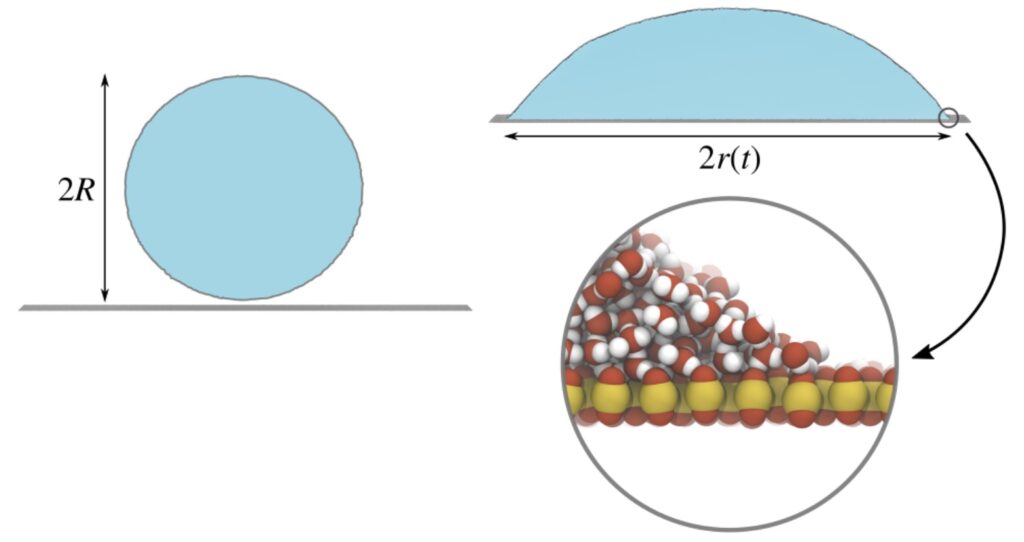Molecular origin of contact line friction in dynamic wetting

Figure: The simulated systems are droplet cylinders with R = 50 nm, consisting of 1.2 million water molecules. After making contact with the hydrophilic substrates they spread out with a base radius r(t). Zooming in shows the molecular nature of the droplets, particularly important at the contact line.
The dynamics of a droplet spreading on a substrate is often strongly affected by friction at the three-phase contact line, where vapour, liquid and substrate meet. Since water does not slip on a hydrophilic substrate, the contact line can only move by water molecules “jumping” ahead of the current contact line. Such effects are not present in current continuum models, so molecular dynamics simulation is needed to study contact line friction. Large system of millions of atoms are needed to avoid finite size effects. We simulated 100 nm radius quasi- 2D droplets using GROMACS on 1280 cores on Beskow. We indentified two different jumping processes, the ratio of which depends on the wetting regime. We are working on incorporating effective models for these processes in continuum flow models.
-
P Johansson, B Hess, DOI: 10.1103/PhysRevFluids.3.074201




